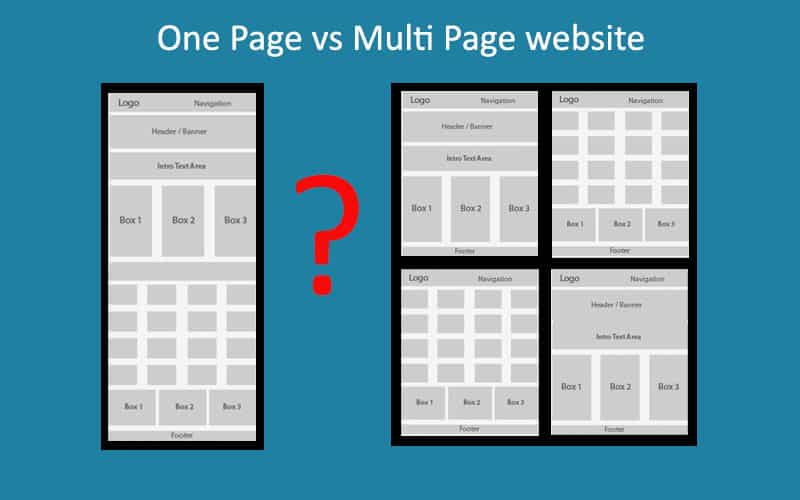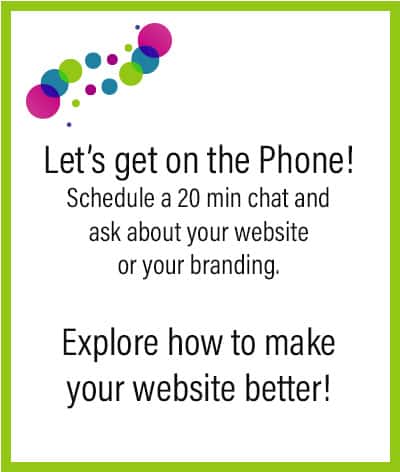Over the years, single-page website design has become trendy and popular. They’re often visually appealing and impressively designed with large images and lots of information added on a single, easy-to-navigate page. A single-page website design is clean, easy, and modern. These are a few reasons that so many people choose them. But there’s one thing that many of these website builders and managers aren’t considering: the SEO (search engine optimization) aspect of these web pages.

To put it simply, I’ll ask you to stop for a moment and consider this: can you fit all of your business and service information onto one page? And does it look organized when you do? Think about all of the information that you have to share with your target clients or customers. You may have contact information, packages, prices, photo galleries, testimonials, frequently asked questions, the business’s history, blog posts, and more content to share.
Even if your content categories start out small, they’re likely to increase over time. You may be fine starting with one picture, a product description, and some contact information. But as your business grows, you may want to include blog posts, news related to your business or industry, additional services and products, and each of the content areas we described above, too. How can you comfortably fit all of this on one page? And if you do, will it ever be as optimized? The outlook isn’t so good for the answers to either of these questions.
Could your business benefit from a single-page website?
Ask these questions:
- Do I have a few products or services to offer and limited content?
- Do you have a simple brand story to tell?
- Do you want your customer to get through your website fast?
- Are your visitors searching for you mostly from mobile?
- Do you have a limited budget?
Advantage of a Single-Page Website
Before we talk about when and why a multi-page website might be better, let’s consider some of the positives of using a single-page website. For one thing, single-page websites offer a better mobile experience because they download faster. They also tend to be easy to navigate due to their design and the fact that we’re all so used to scrolling through web pages on our phones these days. But that’s not all.
A single page makes it easy to guide your visitors’ eyes where you want them to be. They’ll be able to scroll through all of your content at once and you won’t have to worry that they’ll click elsewhere and get distracted or confused. These things also make it easy to target one specific audience, so if you have a really narrowed down niche, the single page design may actually be better for you and your business.
All of the information you want the virtual visitor to have can be easily presented when you use the right layout. And from there, the site will guide your visitors through each aspect of your business as they scroll. For certain businesses, this can be a very sleek, modern, and efficient way to present your information. And there’s even one SEO consideration that works out to your benefit in this situation.
With a single-page website, you can only target one specific keyword. If you only have one service, you only need that one keyword, and you may be just fine with a single-page website. And since there are no other pages to compete with, all of your backlinks go to the single page and give you a higher authority ranking. But it’s not all upsides with a single-page website. Let’s talk about some of the problems you may run into:
Since users will always land at the top of the same page instead of having different options based on their search, it’s important to make sure they can easily find what they’re looking for. Otherwise, they’ll simply close the page and move on. There are no other pages for them to search through if they can’t find the information that they need on the landing page. Sharing your website also gets a bit trickier. You might ask a former client or customer to share your package information, testimonials, or contact information on social media. But if you only have one page, they can only share that one page. This makes it harder for them to direct people to what they want them to see.
And as you may have guessed, single-page websites are normally less detailed. There simply isn’t enough space to share all of the detailed content you have. Forcing all of your content onto one page can make it look cluttered and unorganized. This is distracting for visitors and can also be disappointing. If they’re looking for more detailed explanations of your services and other information, it may be buried under other content or missing from the page entirely.
If you offer a common, easy-to-understand, and singular service, many of these issues aren’t things that you’d have to worry about. You likely have minimal content to share, your target customers already understand you – a one-page website is fine. But keep in mind that even if your business is straight-forward, single-page websites are missing a key content piece: blog posts. There’s nowhere to put them, and not having a blog section could be hurting your website’s SEO ranking. Consistently adding new content helps maintain your ranking.
Single Keyword vs. Multiple Keywords
We talk about this SEO-friendly copywriting strategy all the time, but what’s the problem with having a single keyword? If you have one service or one product, single-page websites with a single keyword are fine. But how many businesses these days have just one service or one product? More complex businesses with multiple services or product offers would benefit more from having a multi-page website that allows for the use of different keywords on different pages.
Each different service can have its own keyword-filled page and rank separately. This factor alone may be enough to help you decide what kind of website you need. If you want to be searchable through multiple different keywords, you’re better off with a multi-page website. This type of website incorporates different keywords and attracts a variety of visitors. But again, if you only have one service or product offering, then you should consider a single-page website instead. Just make sure that you are choosing a single-page website for the right reasons. Don’t let the desire to be trendy overpower your business’s goals.
The Many SEO Benefits of Choosing a Multi-Page Website
We’ve discussed some of the many SEO benefits of a multi-page website above, but here’s the bottom line; with multi-page websites, you can:
- Dedicate a separate page for each service or product and rank those pages separately, potentially drawing in a much wider audience
- Each page can include detailed information about a different aspect of the business; there’s no need to shorten or cut out content for lack of space
- Others can share just one of your website’s pages on social media, and visitors know exactly what to expect when they click on that link
- The download time is faster for shorter individual pages, and with the multi-page option, you can be more detailed about your services and other information, adding additional pages any time you need to
- You can interlink the different pages to guide your visitors and show them all of your assets, instead of leaving it to them to scroll aimlessly through the one page
If you’re still not sure which type of website is right for your business, reach out to me so we can chat! You can also schedule a free 20-minute consultation so we can discuss single vs. multi-page websites, as well as other ways we can make your website better.

